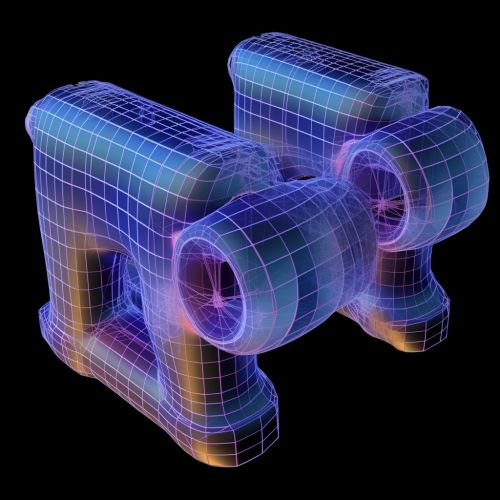Metric Tensor
Introduction
The metric tensor, also known as the fundamental tensor, is a key concept in differential geometry and general relativity. It is a type of function defined on a manifold that takes two tangent vectors as input and produces a scalar. The metric tensor is used to define the concept of distance, angle, volume, and other geometric notions on a manifold.
Definition
In differential geometry, a metric tensor is a type of tensor field defined on a manifold that takes two tangent vectors as input and produces a scalar. More formally, if M is a manifold, then a metric tensor g is a symmetric, positive definite, bilinear form on each tangent space T_pM at every point p in M. This means that for any two tangent vectors v and w in T_pM, the value g(v,w) is a real number that satisfies certain properties.
Properties
The metric tensor has several important properties that make it a fundamental object in differential geometry and general relativity.
Symmetry
The metric tensor is symmetric, which means that for any two tangent vectors v and w, g(v,w) = g(w,v). This property is a reflection of the fact that the order in which we measure distances or angles does not matter.
Positive Definiteness
The metric tensor is positive definite. This means that for any non-zero tangent vector v, g(v,v) > 0. This property ensures that the concept of distance, as defined by the metric tensor, is always positive.
Bilinearity
The metric tensor is bilinear. This means that for any two tangent vectors v and w, and any real numbers a and b, g(av+bw, v) = ag(v,v) + bg(w,v). This property allows us to extend the definition of the metric tensor to arbitrary linear combinations of tangent vectors.
Role in Differential Geometry
In differential geometry, the metric tensor is used to define several key concepts.
Distance
The metric tensor allows us to define the concept of distance on a manifold. Given two points p and q in M, the distance between p and q is defined as the infimum of the lengths of all possible curves in M that connect p and q. The length of a curve is computed using the metric tensor.
Angle
The metric tensor also allows us to define the concept of angle between two tangent vectors. Given two tangent vectors v and w at a point p in M, the angle between v and w is defined as the arc cosine of the ratio g(v,w) / (||v|| ||w||), where ||v|| and ||w|| are the lengths of v and w as defined by the metric tensor.
Volume
The metric tensor can be used to define a volume form on M, which allows us to compute the volume of subsets of M. The volume form is obtained by taking the square root of the determinant of the matrix representation of the metric tensor.
Role in General Relativity
In general relativity, the metric tensor plays a crucial role. It encodes the geometry of spacetime, which is influenced by the distribution of matter and energy. The metric tensor is a solution of the Einstein field equations, which relate the curvature of spacetime, as encoded by the metric tensor, to the distribution of matter and energy, as encoded by the stress-energy tensor.
See Also


